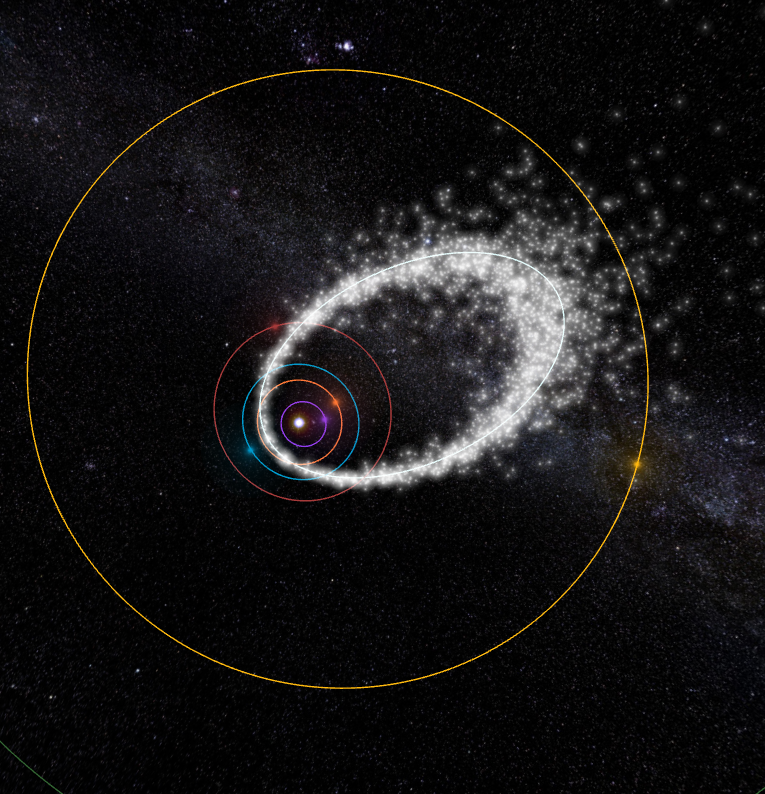Late July Meteor Shower Peak: Timing And Viewing Tips

Welcome to your ultimate source for breaking news, trending updates, and in-depth stories from around the world. Whether it's politics, technology, entertainment, sports, or lifestyle, we bring you real-time updates that keep you informed and ahead of the curve.
Our team works tirelessly to ensure you never miss a moment. From the latest developments in global events to the most talked-about topics on social media, our news platform is designed to deliver accurate and timely information, all in one place.
Stay in the know and join thousands of readers who trust us for reliable, up-to-date content. Explore our expertly curated articles and dive deeper into the stories that matter to you. Visit Best Website now and be part of the conversation. Don't miss out on the headlines that shape our world!
Table of Contents
Late July Meteor Shower Peak: Timing and Viewing Tips for a Stellar Show
The Perseids aren't the only meteor shower worth watching! While August boasts the famous Perseid meteor shower, July offers a less-heralded but equally captivating celestial event: the Southern Delta Aquariids meteor shower. Reaching its peak in late July, this shower promises a stunning display for those willing to stay up late (or wake up early). This article will guide you on precisely when and how to best view this mesmerizing astronomical phenomenon.
When to Catch the Southern Delta Aquariids Peak:
The Southern Delta Aquariids meteor shower typically peaks around July 29th to 30th. However, the radiant point – the apparent origin of the meteors – is best viewed from the Southern Hemisphere. Those in the Northern Hemisphere can still catch a glimpse, but the show will be less spectacular. The best viewing time is after midnight, when the radiant point is highest in the sky.
Where to Look:
The meteor shower's radiant point is located in the constellation Aquarius. To find it, look towards the southeastern horizon after midnight. While the meteors will appear to emanate from Aquarius, they will streak across the entire sky. Don't focus solely on one area; let your gaze wander across the heavens for the best viewing experience. Using a stargazing app like Stellarium or SkySafari can significantly assist in locating Aquarius.
Tips for Optimal Viewing:
- Find a dark location: Light pollution is the enemy of meteor shower viewing. Escape city lights and head to a rural area with minimal light interference for the best possible show. Dark sky parks are ideal locations if you have one nearby.
- Be patient: It takes time for your eyes to adjust to the darkness. Allow at least 30 minutes for your night vision to fully develop.
- Lie down comfortably: Bring a comfortable blanket or reclining chair to make the most of your viewing experience. Looking straight up can strain your neck.
- Dress warmly: Even in summer, nights can get chilly, especially if you're away from city lights. Dress in layers to adjust to changing temperatures.
- Avoid screens: The light from smartphones and other electronic devices will disrupt your night vision. Minimize screen time during your viewing session.
- Check the weather forecast: Clear skies are essential for meteor shower viewing. Check the weather forecast before heading out to ensure optimal viewing conditions.
What to Expect:
The Southern Delta Aquariids aren't as prolific as the Perseids, typically producing around 15-20 meteors per hour at its peak. However, these meteors are known for their speed and bright trails, making for a captivating spectacle. Some meteors might even leave persistent trains – glowing trails that linger for a few seconds after the meteor has passed.
Beyond the Southern Delta Aquariids:
Looking for more celestial events? Mark your calendars for the Perseid meteor shower in August, a truly spectacular display! You can find more information on upcoming meteor showers and astronomical events on websites like NASA's website or the websites of local astronomy clubs.
Conclusion:
While often overshadowed by the Perseids, the Southern Delta Aquariids meteor shower offers a fantastic opportunity to connect with the cosmos. By following these viewing tips and choosing a dark location, you'll significantly increase your chances of witnessing this late July celestial show. So, grab your blankets, find a dark spot, and prepare for a breathtaking display of shooting stars! Don't forget to share your photos on social media using #SouthernDeltaAquariids!

Thank you for visiting our website, your trusted source for the latest updates and in-depth coverage on Late July Meteor Shower Peak: Timing And Viewing Tips. We're committed to keeping you informed with timely and accurate information to meet your curiosity and needs.
If you have any questions, suggestions, or feedback, we'd love to hear from you. Your insights are valuable to us and help us improve to serve you better. Feel free to reach out through our contact page.
Don't forget to bookmark our website and check back regularly for the latest headlines and trending topics. See you next time, and thank you for being part of our growing community!
Featured Posts
-
 Nfl Global Expansion One Overseas Game Per Team Every Year
Jul 29, 2025
Nfl Global Expansion One Overseas Game Per Team Every Year
Jul 29, 2025 -
 Bubba Wallaces Triumph Breaking Barriers At The Brickyard 400
Jul 29, 2025
Bubba Wallaces Triumph Breaking Barriers At The Brickyard 400
Jul 29, 2025 -
 Netflixs Wwe Unreal Everything You Need To Know About The Documentary
Jul 29, 2025
Netflixs Wwe Unreal Everything You Need To Know About The Documentary
Jul 29, 2025 -
 Jerry Jones Faces Pressure Cowboys Fans Chant Pay Micah
Jul 29, 2025
Jerry Jones Faces Pressure Cowboys Fans Chant Pay Micah
Jul 29, 2025 -
 Rare Public Display Of Affection Pam Anderson And Liam Neeson Spotted
Jul 29, 2025
Rare Public Display Of Affection Pam Anderson And Liam Neeson Spotted
Jul 29, 2025
